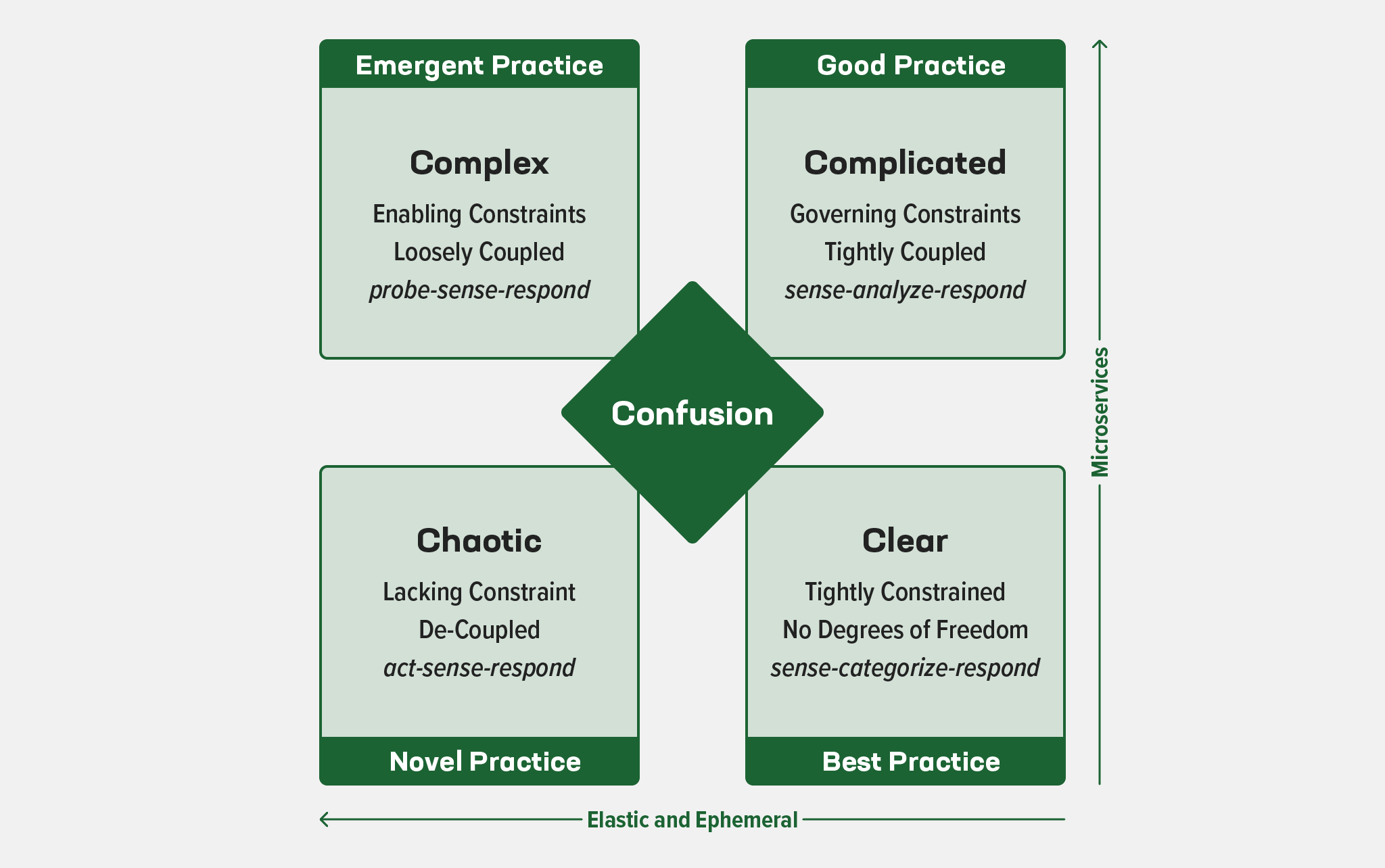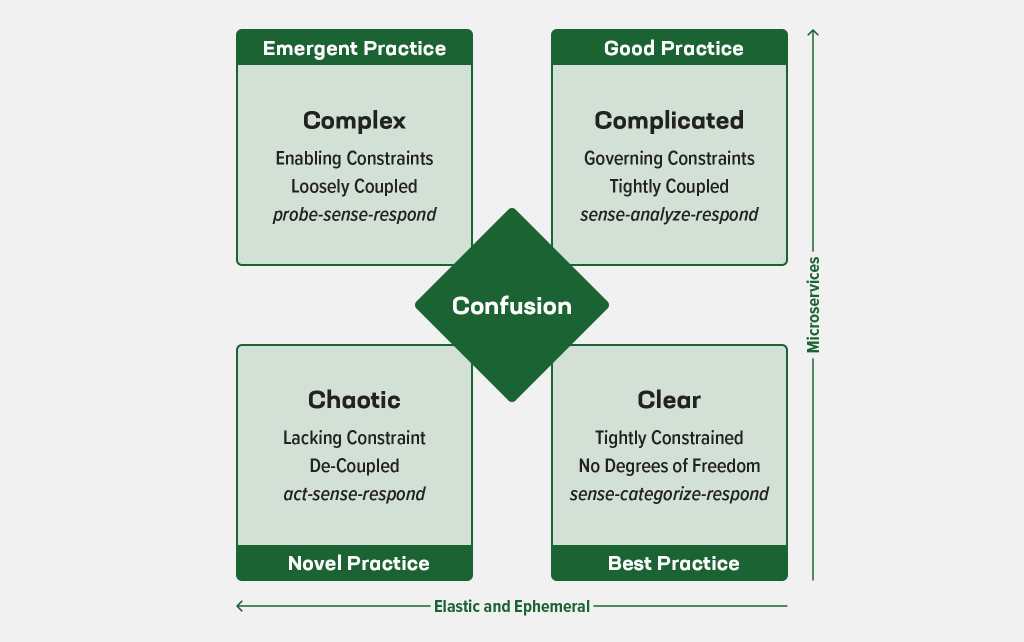How OpenTelemetry Is Changing the Way We Trace and Design Apps

Observability is key when running cloud‑native apps, where app functionality emerges from the interaction among large numbers of microservices running in multiple locations. The loosely coupled nature of microservices apps potentially means each microservice reports on its activities in its own way. Without a tool that compiles and correlates that telemetry data, it’s hugely difficult – if not impossible – to track the processing of a request from start to finish, which is crucial for troubleshooting.
When searching for a multi‑functional observability tool, the team behind the NGINX Modern Apps Reference Architecture (MARA) project chose OpenTelemetry. With our OSS team picking this emerging project, we want to dive in further. At GlueCon 2022, I got together with Granville Schmidt, Architect in the Office of the CTO at F5, to discuss why we’re excited about the current state and future offerings of OpenTelemetry. You can watch our conversation below and, in this blog, learn more about why OpenTelemetry is a great asset for the cloud‑native application landscape.
OpenTelemetry Powers Observability 2.0
First announced at KubeCon 2019 in Barcelona, OpenTelemetry has attracted an enthusiastic set of contributors. It’s the second‑most popular project at the Cloud Native Computing Foundation (CNCF) in terms of number of contributions and, in the past six months, the rate of contribution has been higher than ever. This large number of contributors shows that OpenTelemetry has matured and is starting to cross the chasm between early adopters (who are willing to be ahead of the curve) and pragmatists (who desire mature products).
OpenTelemetry is focused on data – specifically, the data and data stream (telemetry) needed to best understand, troubleshoot, and improve our applications. Data is only useful if it can be aggregated, analyzed, and visualized at scale. While OpenTelemetry doesn’t provide direction for how to visualize the data, it lets us stop worrying about what data we can get and instead focus on what we can do with the data.
OpenTelemetry also enables a natural correlation across those data sources, rather than expecting us to attempt that correlation ourselves. OpenTelemetry’s ability to correlate events across apps is leading us to Observability 2.0 – a new benchmark for measuring application activity in the cloud. The data is already correlated for us, which changes the way we look at our application space. We’re no longer limited to just knowing whether the app is running or not; we now can understand the pathway any request takes through our apps.
Two notable open source projects preceded OpenTelemetry: OpenTracing (OT) and OpenCensus (OC). Both of those took on the challenge of standardizing the format of trace data so we could get the necessary information and understand how it impacted our modern apps. While each project had similarities, they competed for resources and companies often had to pick just one. In March 2019, the two projects announced their merger into OpenTelemetry with the goal of unifying how trace data is generated and formatted. The OpenTelemetry project is further defining standards for acquiring other classes of observability data (metrics and logs) via the same telemetry channels as traces, leading to more integration and clarity.
Next, let’s look at two exciting functional aspects of OpenTelemetry: distributed tracing and application intelligence.
Why Distributed Tracing Is Needed in Modern App Architectures
While distributed tracing has been around for years, many changes in the last decade have increased the need for it. Using the Cynefin framework, we can highlight some of the changes and challenges we now face in modern applications:
The Cynefin framework illustrates how we can change our practices as we move from simple to complex. The challenge is that our movement is along two separate paths, each with its own characteristics, and trying to take a shortcut directly from simple to complex often creates disorder and incomplete progress.
Let’s identify which elements create the paths in our modern app and cloud‑native journey. In our first path (the Y axis in the Cynefin diagram), we have modern apps which are usually microservices architectures, where each app does a specific job. In the second path (the X axis), our complicated environment is ephemeral, as microservice instances spin up and down in response to demand and are moved to different hosts in response to network issues.
We also have to consider the emergence and massive growth of cloud environments like Amazon Web Services (AWS), Microsoft Azure, and Google Cloud Platform (GCP). An advantage of such clouds is elastic response – expanding or contracting resources to match the current level of demand. With the added impact of container orchestration (most commonly using Kubernetes), we start seeing chaotic behavior as the number and location of resources change over time. (Even this relatively constrained view is chaotic, and elements like serverless functions can make it more so.)
In a modern architecture, with many separate parts producing the telemetry we need to monitor and maintain our apps, the data load is massive and complicated. Problems might not repeat reliably or be easy to elicit, as we do not fully control the infrastructure and communication pathways. We need technology that lets us track all activities and related elements, so we can understand and analyze our changing environments.
That’s where OpenTelemetry comes in.
The Future of Distributed Tracing with OpenTelemetry
Distributed tracing is causing big changes in the industry, especially around how requests generate an internal view of performance via metrics. With distributed tracing, we can track new metrics of many types, but most commonly those related to the number of requests per time unit, number of errors per time unit, and how long an aggregate request takes over that time unit.
Metrics have been around for a while – they are easy to manage and store, aggregate easily, and lend themselves to mathematical analysis. In OpenTelemetry, all apps that generate metrics can send them to a common collection point via a telemetry (transfer) layer, which helps to align the data from the loosely coupled services generating it. This includes alignment with the underlying infrastructure. In short, with OpenTelemetry, it becomes easier to acquire and send metrics.
OpenTelemetry can also help solve the problem of timestamp drift and skew, which makes it difficult to correlate events. OpenTelemetry assigns each request a TraceId, but data can still be impacted by drift and skew, which often appear in cloud‑native architectures. Drift and skew can result from reporting paths with varying durations or from lack of tight synchronization among the clocks on the various hosts. By tracking communication among components during traffic processing, distributed tracing allows OpenTelemetry to measure individual spans – the units of work and building blocks of a trace – without requiring deep instrumentation of the associated app.
Combining these three signals (categories of telemetry) enables us to correct issues and return our apps to production quality:
This is where we come back to Observability 2.0. The ability to obtain traces and immediately see which metrics correspond to which trace gives us a lot of power. For example, when the metrics indicate a problem, distributed tracing lets you go all the way back to the specific request that caused the initial issue and track progress through each step of the request fulfillment. Since our trace is made up of the spans in the order they occur, we can follow the request through each step in its journey. Having an understanding of what happened, in what order – from the initial event to the indicated problem and all the way to the end result – allows us to target exactly “where” within our apps to focus our attention.
As simple as it may sound, the distributed tracing aspect of OpenTelemetry can provide us great insight into what our users are experiencing, being a proxy for request success and timing of execution. As a user, I care about my request. As a site reliability engineer (SRE), I care about the aggregated requests. OpenTelemetry gives me both, along with the ability to drill from aggregate into specifics, since it is designed to make all needed data available across all apps.
Application Intelligence with AI and ML
This new data stream from OpenTelemetry also allows us to be adaptive and automated in our development and operational response. With all this accrued data, we can make our application more intelligent. F5 is currently focusing on helping our customers on their journey to developing and deploying what we call “adaptive applications“. Adaptive apps are just what they sound like: applications that automatically and intelligently adjust their behavior in reaction to changes in their environment.
That’s why you’re seeing a lot more artificial intelligence (AI) and machine learning (ML) in various solutions. But it’s not just because they are trending terms – AI and ML are useful because we now have enough data to reach accurate conclusions about causality and design appropriate responses.
By making telemetry data accessible and standard, OpenTelemetry makes the journey to adaptive apps that much easier. As different types of products start to output similar metrics, and by making use of the established semantic conventions within OpenTelemetry, it becomes easier to correlate their actions during request processing and feed that information to ML and AI algorithms to enable applications and infrastructure to dynamically adapt.
When you understand the data science behind it all and make sure that your telemetry data relates to your AI and ML, that’s where the data‑driven nature of adaptive apps can evolve and shine.
Summary
Codifying telemetry is an obvious win for both the users of OpenTelemetry and for the applications that use it as their telemetry channel. Data can be collected from multiple sources and forwarded to any compatible aggregation and analysis tools. Additionally, the OpenTelemetry Collector frees vendors from the need to implement collectors themselves. Instead, they can focus on enhancing their code to perform meaningful analysis and take intelligent actions, and can build new tools to assist in understanding this complex and chaotic new world. In fact, the OpenTelemetry Collector – backed by the innovation of open source – is immensely capable of working with nearly every existing format while bridging the technology into the future.
With its focus on the principal classes of data we need to understand our applications, OpenTelemetry has made it possible for our apps to provide deeper insights into both the performance and issues of our complex modern application world. By correlating our data, aligning to semantic and standard conventions, OpenTelemetry makes the journey to modern applications more approachable. And as the project continues to mature and adoption continues to grow, OpenTelemetry is the clear approach to our deeper understanding and our ability to apply AI and ML techniques to make that complexity understandable.
To learn more about how NGINX’s OSS engineers are using OpenTelemetry, try out the Modern Apps Reference Architecture and sample application (Bank of Sirius).
<!– t.mauro will uncomment when the the next GlueCon blog is published
Related Posts
[insert posts] –>
The post How OpenTelemetry Is Changing the Way We Trace and Design Apps appeared first on NGINX.
Source: How OpenTelemetry Is Changing the Way We Trace and Design Apps
